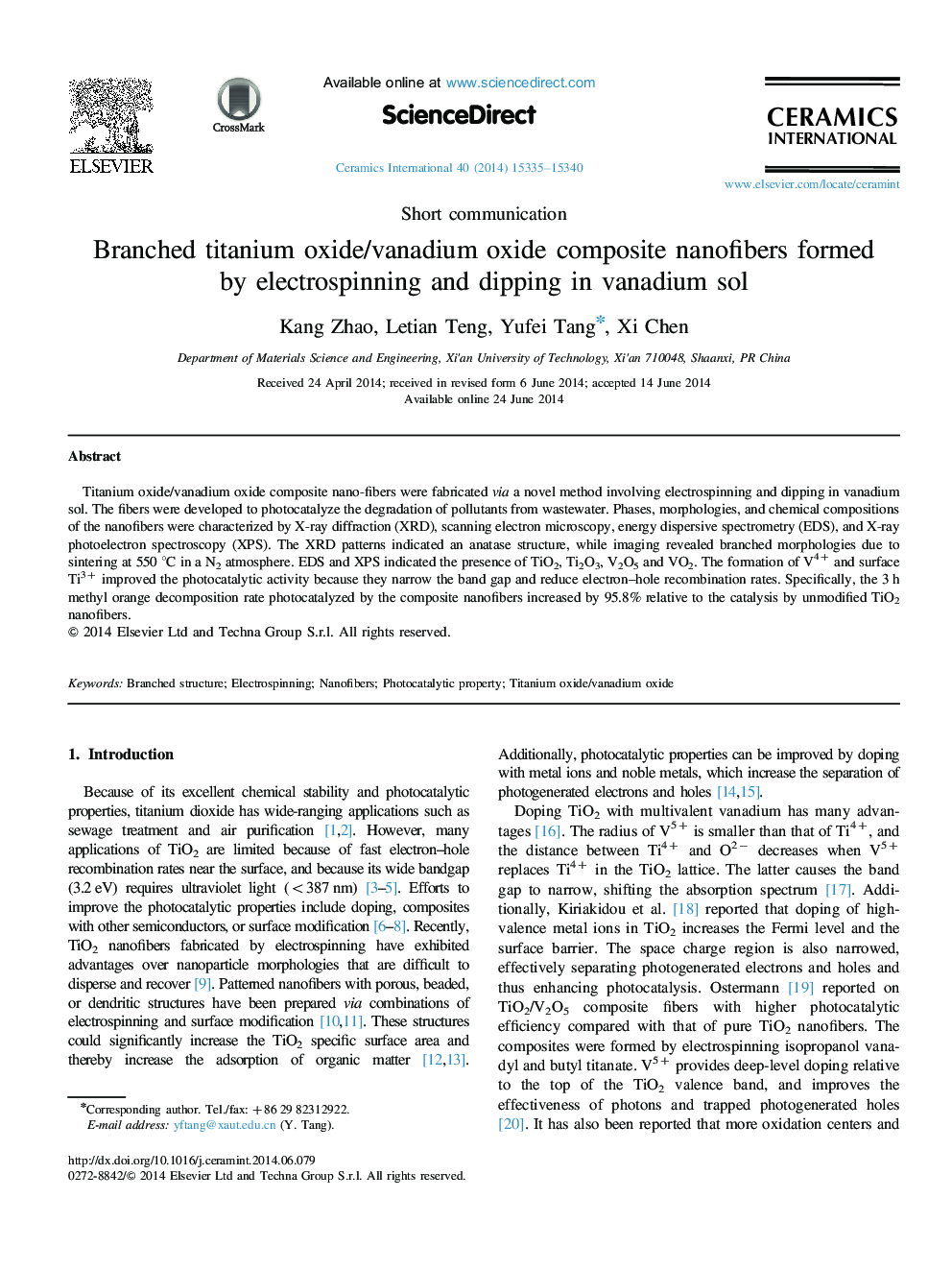| Article ID | Journal | Published Year | Pages | File Type |
|---|---|---|---|---|
| 1461287 | Ceramics International | 2014 | 6 Pages |
Titanium oxide/vanadium oxide composite nano-fibers were fabricated via a novel method involving electrospinning and dipping in vanadium sol. The fibers were developed to photocatalyze the degradation of pollutants from wastewater. Phases, morphologies, and chemical compositions of the nanofibers were characterized by X-ray diffraction (XRD), scanning electron microscopy, energy dispersive spectrometry (EDS), and X-ray photoelectron spectroscopy (XPS). The XRD patterns indicated an anatase structure, while imaging revealed branched morphologies due to sintering at 550 °C in a N2 atmosphere. EDS and XPS indicated the presence of TiO2, Ti2O3, V2O5 and VO2. The formation of V4+ and surface Ti3+ improved the photocatalytic activity because they narrow the band gap and reduce electron–hole recombination rates. Specifically, the 3 h methyl orange decomposition rate photocatalyzed by the composite nanofibers increased by 95.8% relative to the catalysis by unmodified TiO2 nanofibers.
